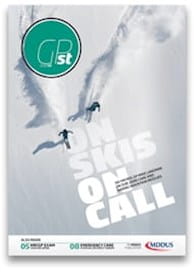CAUGHT IN THE CROSSFIRE If you’re tired of being puked on by norovirus-affl icted patients then spare a thought for scientists at the Health and Safety Laboratory in Derbyshire. They have spent weeks in the company of Larry the “humanoid vomiting system” watching him be sick continuously. Loaded up with “vomitus substitute”, the projectile vomiting robot is helping researchers determine how far infections can reach in a bid to learn how to stop the spread of the norovirus. His vomit is fl uorescent which means even the smallest patches of sick can be traced as they are launched across the room. It takes fewer than 20 virus particles to infect someone with norovirus and the number of cases in the UK of late has risen sharply. Now pass the disinfectant…
EAT YOUR HEART OUT CAKE SHOP Recently the Pathology Museum at St Bart’s in London held a threeday exhibition/event that featured a shop off ering pathological specimens rendered in cake. Among the deliciously disgusting items reportedly on sale were red blood cell cupcakes, fungal toenail cookies and polycystic kidney cakes – not to mention an enormous edible skinless head. The event was curated by Emma Thomas, a freelance artist working in the “medium of cake”. Over 20 cakemakers including students and academics contributed designs to help raise awareness of disease. Thomas’ next project is an edible autopsy which she plans to slice up and serve to a select audience. Count me out.
WHAT’S APP? A cautionary tale for tech lovers comes from US researchers who published a report in JAMA Dermatology. They found three quarters of smartphone applications designed to assess the likelihood of malignancy in photos of skin lesions wrongly diagnosed at least 30 per cent of melanomas as “unconcerning”. It raises fears that unregulated apps could falsely reassure patients that they don’t need to seek medical advice, leading to delays in diagnosis. They tested four apps and found an enormous variation in performance with sensitivity ranging from 6.8 per cent to 98.1 per cent. Not surprisingly, the best app was one that submitted images to a qualifi ed dermatologist while the poorest used an algorithm to analyse images.
THE JOYS OF AGEING Reassuring news indeed for any patients with age-related complaints. According to an article in the Daily Mail, there are many reasons to be cheerful about getting older. Apparently, after the age of 50 we tend to be less aff ected by seasonal allergies like hayfever, we have fewer migraines, we are less sweaty (thanks to shrinking sweat glands), we are more competitive and we even have better sex. Add that to fewer colds, less sensitive teeth, increased happiness and better stamina and middle age is starting to sound positively appealing. Just don’t mention creaky joints, bad backs and the menopause…
LET THEM EAT NUTS AND BERRIES Diary recently paid a visit to the Edinburgh Royal Infirmary and was much impressed by the large pick ‘n’ mix stand given pride of place in the central lobby newsagent. One can only imagine Professor Terence Stephenson of The Academy of Medical Royal Colleges bursting in like Jesus in the temple, brandishing Measuring up: the medical profession’s prescription for the nation’s obesity crisis. “You are just consuming neat sugar. Your body didn’t evolve to handle this kind of thing,” he might shout, as quoted recently in the Guardian newspaper. No doubt on our next visit it will be a selection of dried fi gs and blanched almonds.
PULL THE PLUG On paper the Summary Care Record sounds like a no-brainer – a system by which a doctor can access NHS records, anywhere, anytime, no matter how famous the patient (though with an audit trail). To date some 23 million SCRs have been created for patients in England. Impressive numbers justifying the astronomical investment until you consider a recent statement by Dr Paul Cundy, chair of the GPC’s information technology subcommittee. Dr Cundy calculates that given the current low utilisation rate, each viewing to date has eff ectively cost an estimated £1,200. He commented: “The system is an absolute disgrace and the plug should be pulled out on it as soon as possible”. Diary is unqualified to comment.
YOU ARE WHAT YOU WEE Hanging about toilets in central London sounds like a dubious way of spending a research grant. Not so when the resulting study gets published in the Quarterly Journal of Medicine. Anonymous urine samples where collected from stand-alone, four person portable urinals across the city centre in order to study the use of “novel psychoactive substances”. Seven established recreational drugs were detected in 11 urinals including cocaine, cannabis and methamphetamine but the researchers also detected drugs currently uncontrolled in the UK including methylhexaneamine, and methiopropamine. The “legal high” hordenine was found in all 12 urinals and metabolites of the anabolic steroid nandrolone were found in two. Several interesting conclusions are off ered in the article abstract though sadly nothing on the crucial question: what is the connection between drug use and portable toilets?
BEAM ME UP, DOC The pesky process of diagnosis could be simplified thanks to the development of a Star Trekstyle tricorder X-ray device. An engineering team at the University of Missouri has invented a compact source of X-rays and other forms of radiation the size of a stick of chewing gum. They predict a prototype hand-held X-ray scanner could emerge in a few years’ time that “could improve medical services in remote and impoverished regions and reduce healthcare expenses everywhere.”
This page was correct at the time of publication. Any guidance is intended as general guidance for members only. If you are a member and need specific advice relating to your own circumstances, please contact one of our advisers.
Read more from this issue of Insight Primary

Save this article
Save this article to a list of favourite articles which members can access in their account.
Save to library